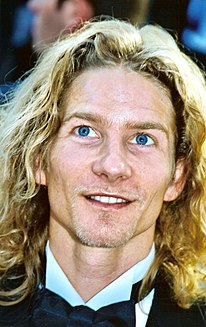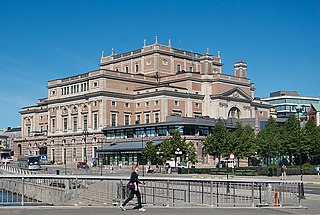Related Research Articles

Contra dance is a form of folk dancing made up of long lines of couples. It has mixed origins from English country dance, Scottish country dance, and French dance styles in the 17th century. Sometimes described as New England folk dance or Appalachian folk dance, contra dances can be found around the world, but are most common in the United States, Canada, and other Anglophone countries.

A fiddle is a bowed string musical instrument, most often a violin. It is a colloquial term for the violin, used by players in all genres, including classical music. Although in many cases violins and fiddles are essentially synonymous, the style of the music played may determine specific construction differences between fiddles and classical violins. For example, fiddles may optionally be set up with a bridge with a flatter arch to reduce the range of bow-arm motion needed for techniques such as the double shuffle, a form of bariolage involving rapid alternation between pairs of adjacent strings. To produce a "brighter" tone than the deep tones of gut or synthetic core strings, fiddlers often use steel strings. The fiddle is part of many traditional (folk) styles, which are typically aural traditions—taught "by ear" rather than via written music.

Louis XIV, also known as Louis the Great or the Sun King, was King of France from 14 May 1643 until his death in 1715. His reign of 72 years and 110 days is the longest of any sovereign in history whose date is verifiable. Although Louis XIV's France was emblematic of the age of absolutism in Europe, the King surrounded himself with a variety of significant political, military, and cultural figures, such as Bossuet, Colbert, Le Brun, Le Nôtre, Lully, Mazarin, Molière, Racine, Turenne, and Vauban.

The jig is a form of lively folk dance in compound metre, as well as the accompanying dance tune. It is most associated with Irish music and dance. It first gained popularity in 16th-century Ireland and parts of Great Britain and was quickly adopted on mainland Europe where it eventually became the final movement of the mature Baroque dance suite. Today it is most associated with Irish dance music, Scottish country dance and the Métis people in Canada. Jigs were originally in duple compound metre,, but have been adapted to a variety of time signatures, by which they are often classified into groups, including double jigs, slip jigs and single jigs.

Margaretha Geertruida MacLeod, better known by the stage name Mata Hari, was a Dutch exotic dancer and courtesan who was convicted of being a spy for Germany during World War I. She was executed by firing squad in France. The idea of a beautiful exotic dancer using her powers of seduction as a spy made her name synonymous with the femme fatale. Her life inspired a number of films and other works. Professor Pat Shipman, a scholar and biographer of Mata Hari, has stated that Mata Hari was innocent and condemned only because the French Army needed a scapegoat.

Ballet is a type of performance dance that originated during the Italian Renaissance in the fifteenth century and later developed into a concert dance form in France and Russia. It has since become a widespread and highly technical form of dance with its own vocabulary. Ballet has been influential globally and has defined the foundational techniques which are used in many other dance genres and cultures. Various schools around the world have incorporated their own cultures. As a result, ballet has evolved in distinct ways.

Electroclash is a genre of music that fuses 1980s electro, new wave and synth-pop with 1990s techno, retro-style electropop and electronic dance music. It emerged in the later 1990s and is often thought of as reaching its peak circa 2002/2003. It was pioneered by and associated with acts such as I-F, DJ Hell, Miss Kittin and The Hacker, and Fischerspooner.

A suite, in Western classical music and jazz, is an ordered set of instrumental or orchestral/concert band pieces. It originated in the late 14th century as a pairing of dance tunes and grew in scope to comprise up to five dances, sometimes with a prelude, by the early 17th century. The separate movements were often thematically and tonally linked. The term can also be used to refer to similar forms in other musical traditions, such as the Turkish fasıl and the Arab nuubaat.

Rudolf Khametovich Nureyev was a Soviet-born ballet dancer and choreographer. Nureyev is regarded by some as the greatest male ballet dancer of his generation.

Social dances are dances that have a social function and context. Social dances are intended for participation rather than performance. They are often danced merely to socialise and for entertainment, though they may have ceremonial, competitive and erotic functions.

Historical dance is a term covering a wide variety of Western European-based dance types from the past as they are danced in the present. Today historical dances are danced as performance, for pleasure at themed balls or dance clubs, as historical reenactment, or for musicological or historical research.
This is an alphabetical index of articles related to dance.

In works of art, the adjective macabre means "having the quality of having a grim or ghastly atmosphere". The macabre works to emphasize the details and symbols of death. The term also refers to works particularly gruesome in nature.

Gwendal Peizerat is a French former competitive ice dancer. With Marina Anissina, he is the 2002 Olympic champion, the 1998 Olympic bronze medalist, the 2000 World champion, and a six-time French national champion.

The Royal Swedish Ballet is one of the oldest ballet companies in Europe. Based in Stockholm, Sweden, King Gustav III founded the ballet in 1773 as a part of his national cultural project in response to the French and Italian dominance in this field; he also founded the Royal Swedish Opera and the Royal Dramatic Theatre. All of these were initially located in the old theatre of Bollhuset. The troupe was founded with the opening of the Royal Swedish Opera, which has served as its home since that time.

Dance music is music composed specifically to facilitate or accompany dancing. It can be either a whole musical piece or part of a larger musical arrangement. In terms of performance, the major categories are live dance music and recorded dance music. While there exist attestations of the combination of dance and music in ancient times, the earliest Western dance music that we can still reproduce with a degree of certainty are old fashioned dances. In the Baroque period, the major dance styles were noble court dances. In the classical music era, the minuet was frequently used as a third movement, although in this context it would not accompany any dancing. The waltz also arose later in the classical era. Both remained part of the romantic music period, which also saw the rise of various other nationalistic dance forms like the barcarolle, mazurka, ecossaise, ballade and polonaise.
Attilio Labis is a French ballet dancer and teacher. He began his training at the Opéra de Paris when he was nine years old and rose through the ranks of the school. In 1952 he was accepted into the corps de ballet Paris Opera Ballet, but in 1958 he had to join the military. Upon the completion his military service, he came back and successfully auditioned for a "Premier Danseur" position after only one week of training. He was promoted to "Danseur Étoile" approximately one year later, after André Malraux saw him dance "Pas de Dieux", a choreography by Gene Kelly, and recommended he be promoted. He performed as a Danseur Étoile in the Paris Opera Ballet from 1960 to 1972, then taught the company as a ballet teacher until his retirement.
He is seen as having brought many technical innovations to the French school, including more acrobatic steps in solos and duets, and moving the foot higher to the "retiré au genou" position for pirouettes, from the old "à la cheville" position.
He often performed with his wife, "Étoile" Christine Vlassi, as well as with other "Étoiles" such as Margot Fonteyn and Claude Bessy.
He originated the role of Siegfried in the Vladimir Bourmeister staging of Swan Lake at the Paris Opera Ballet.
Hula Dancer was an American-bred French-trained Thoroughbred racehorse.
Green Dancer was an American-bred, French-trained Thoroughbred racehorse and stallion. A son of the British Tiple Crown winner Nijinsky, he won the French 2000 Guineas in 1975.
Milena Salvini was an Italian-born French exponent and teacher of Indian classical dance. Especially known for her services to Kathakali, in 2019 she was awarded India's fourth highest civilian award, the Padma Shri.
References
- ↑ "Espringale". oxfordmusiconline.com. Retrieved 5 September 2019.